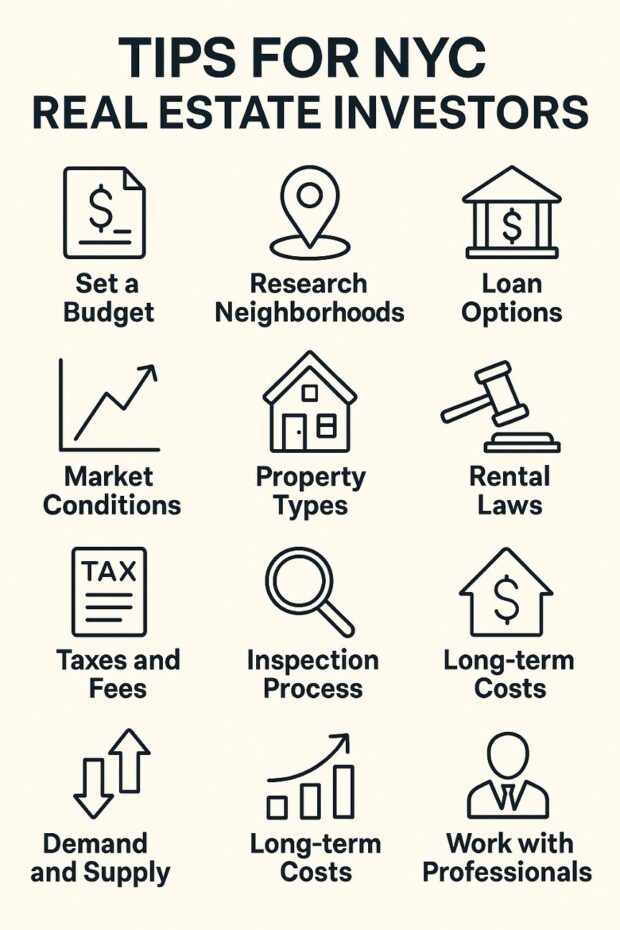Real estate in New York City is a beast of its own—equal parts opportunity and complexity. Whether you’re thinking about flipping brownstones in Brooklyn, buying a co-op in Manhattan, or building a rental portfolio in the Bronx, there are unique factors at play.
Here are 10 things every investor should know before diving in.
Co-ops, condos, multi-families, and mixed-use buildings each have their own quirks in NYC. Co-ops, for example, often require board approval not just for occupancy, but also for any renovation or subletting plans. For investors, this can be a headache—especially if you’re trying to scale.
🏢 Tip: Focus on condos or 2–4 unit multifamily properties if you’re aiming to rent or flip with fewer restrictions.
Manhattan may be the brand, but Queens and the Bronx are where many investors are making real returns today. Price-to-rent ratios, tax burdens, and tenant protections vary widely across boroughs—and even within neighborhoods.
📍 NYC Investment Heat Map

From transfer taxes and mansion taxes to higher-than-average property taxes in outer boroughs, you’ll need to budget carefully. And keep in mind, taxes can vary not only by location but also by property type and size.
💡 Pro tip: Work with a CPA who specializes in New York real estate. One wrong assumption about property taxes can turn a great deal into a losing one.
For investors focused on rental income, DSCR (Debt-Service Coverage Ratio) loans are a popular financing option. They’re based on rental income—not your personal income.
But in NYC, where high prices don’t always translate to high rents, hitting the required DSCR ratio can be a challenge.
Hard money lenders often get stereotyped as “only for distressed properties,” but in NYC, they’re a go-to for fast-moving deals, bidding at auctions, or closing while traditional financing is still stuck in underwriting.
Properties subject to rent stabilization laws can be deceptively priced. While they may appear like good deals based on square footage, the income potential can be locked in for years—or even decades.
📌 Always ask:
If your strategy involves rehab, prepare for a longer runway. Permitting delays, union labor requirements, and surprise inspections can cause timelines to drag and budgets to balloon.

NYC cap rates are typically lower than in secondary markets, so you’re not going to find 8% returns on turnkey properties. Your edge comes from creative strategies—like adding value, converting use, or short-term rentals (where allowed).
In NYC, off-market and pocket listings dominate the investment space. Savvy investors build relationships—with wholesalers, brokers, attorneys, and even supers. That’s how you get first dibs on undervalued opportunities.
🧠 Tip: Join local investor meetups or look into REI groups on Slack and Discord to stay in the loop.
Between tenant rights, HPD requirements, and local compliance rules, you’ll want a team (not just a lawyer) to back you up. Building violations and litigation histories can kill your resale value or lead to massive fines.
✅ Do your due diligence: Always pull a Property Shark or ACRIS report before you buy.
Investing in NYC real estate is like running a marathon with hurdles—you need speed, endurance, and the ability to jump at the right moment. With the right knowledge and the right financing partners, though, it’s one of the most rewarding markets in the country.
Looking for financing options tailored for NYC deals? Whether you’re flipping or building a rental portfolio, check out:
🔗 New York Hard Money Loans
🔗 DSCR Loans in New York
Like us on Facebook for more stories like this: